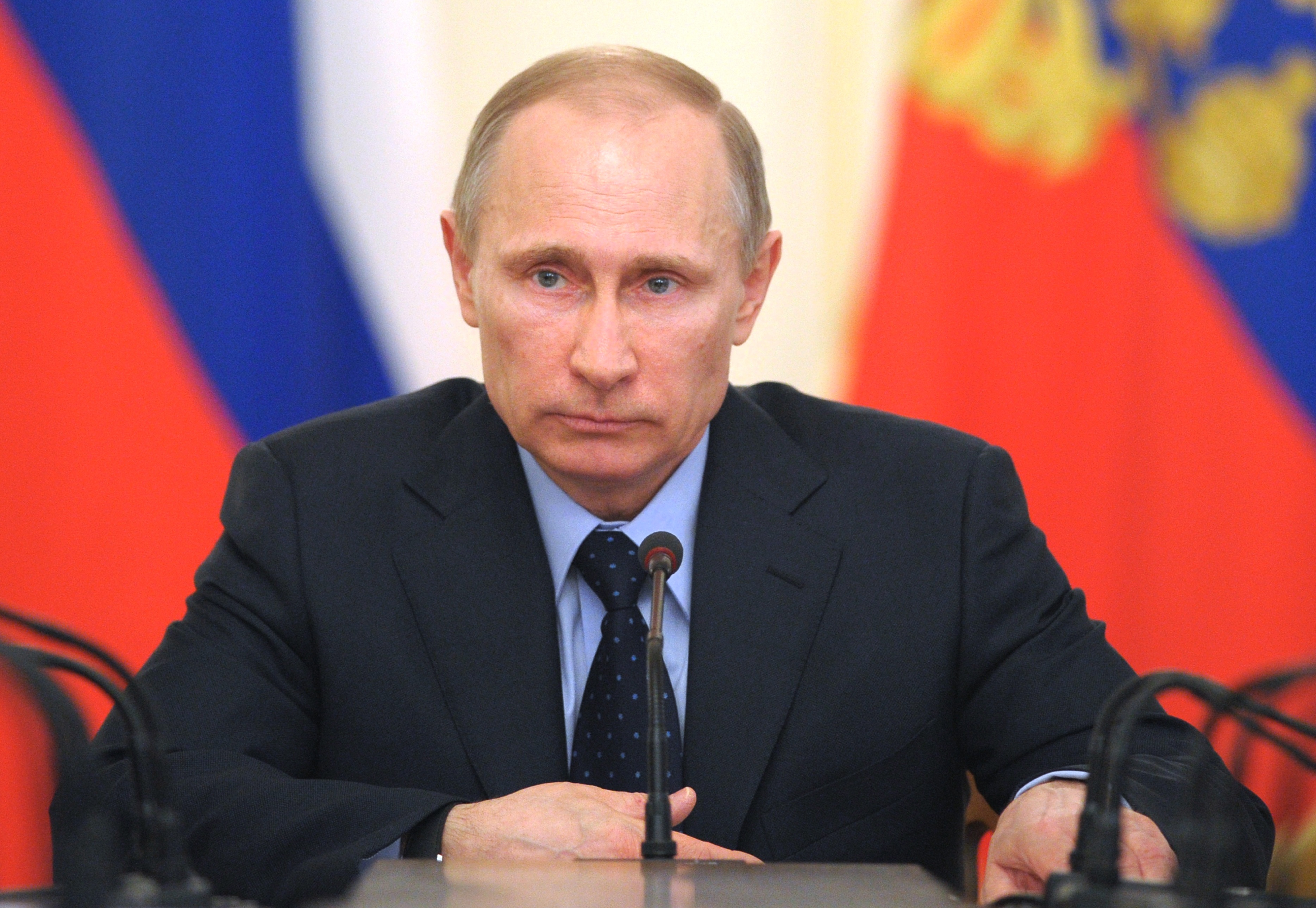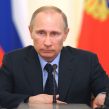
Putin’s Ceasefire Plan Sets Traps for Ukraine
Publication: Eurasia Daily Monitor Volume: 11 Issue: 154
By:

Russian President Vladimir Putin has Ukraine cornered on the battlefield and in diplomatic negotiations at this moment (see accompanying article). On September 3, Putin proposed a seven-point ceasefire plan to Ukrainian President Petro Poroshenko, under the duress of Russian and proxy military advances in Ukraine’s Donetsk and Luhansk provinces. For added dramatic effect, Putin announced his plan while overflying Siberia en route to Mongolia, and conferred with Poroshenko by telephone while in the air.
Putin’s seven-point ceasefire plan stops short of addressing political issues explicitly at this stage. However, it stacks the cards in Russia’s and its proxies’ favor, envisaging subsequent negotiations to “freeze” this conflict in Ukraine. The document is designed to position Russia as mediator between Ukraine’s central government and the Donetsk-Luhansk “people’s republics.” The document’s title underscores Putin’s personal authorship, as if to make it harder to refuse (kremlin.ru, September 3; Interfax, September 3, 4).
The document’s preamble defines the Ukrainian government and the “armed formations in south-eastern Ukraine” as the “conflict parties.” They are told (as if they were co-equal) that they “must coordinate and agree without delay” on seven steps:
1. “Stop active offensive operations by the [Ukrainian] armed forces and southeastern Ukraine’s insurgents [‘opolchenie’] in the areas of Donetsk and Luhansk.”
Significance: Russia’s own forces and proxy forces would obtain immunity and cement their recent territorial gains. Following the Russian army’s rout of Ukrainian troops since August 24, Putin apparently calculates that Kyiv would consent to a ceasefire to avoid further advances by Russian conventional forces now inside Ukraine.
2. “Pull back Ukrainian forces to positions beyond artillery or rocket range from populated localities [‘naselennye punkty,’ term encompassing large cities and small villages].” The demand concerns explicitly the “forces” as such, not the artillery with those forces.
Implication: in practice, this means unilateral withdrawal of Ukrainian forces from Donetsk-Luhansk altogether, while Russia’s own forces and its proxy forces remain.
3. “Consider setting up international control over the ceasefire’s implementation and monitoring in the security zone.”
Significance: the concept of a “security zone,” familiar from the Russian-orchestrated conflicts in Moldova and Georgia (Transnistria, Abkhazia, South Ossetia) is now proposed to Ukraine. The document introduces it without explanation, unobtrusively. It implies a Russian-controlled zone to separate the local “conflicting parties” (with Russia acting as a peacekeeper/mediator). In Ukraine’s case, the Organization for Security and Cooperation in Europe (OSCE) seems pre-designated to monitor and control this arrangement. The OSCE’s mandate, however, depends on Russian approval in minute detail.
4. “Rule out the use of combat aviation against populated localities.”
Implication: No Ukrainian air force flights over secessionist-controlled territory generally.
5. Exchanges of forcibly-held persons by the two sides, unconditionally, on an all-for-all basis.
Significance: Ukrainian authorities and society at large have supported such exchanges all along. In most cases, the authorities release secessionist fighters captured during battle, in exchange for civilians abducted by secessionists for ransom.
6. “Open humanitarian corridors for the movement of refugees and delivery of humanitarian cargoes,” in the “populated localities [sic]” of the Donetsk and Luhansk provinces.
Significance: international aegis (Red Cross or other) is not mentioned, leaving sufficient scope for Russian militarized “aid convoys” intruding, as just seen during August.
7. “Provide access for [Russia’s] reconstruction brigades” to repair damaged infrastructure throughout Donetsk and Luhansk provinces.
Implication: Russian “reconstruction brigades” would seem either redundant or a security challenge (akin to the trucking convoys). Ukraine expects several billion dollar’ worth of reconstruction and modernization aid from Western donors and Ukrainian industrial oligarchs.
In the document’s codicil, Putin proposes that “the Kyiv authorities and representatives of Ukraine’s south-east” agree among themselves on these points as early as September 5, in the existing “Contact Group” (comprised of Ukraine, Russia, the OSCE, and the Donetsk-Luhansk “republics”). Ukrainian acceptance in this form would entail: de facto recognition of the “republics,” empowerment of Russia as arbiter, and negotiations on the status of Donetsk-Luhansk vis-à-vis Ukraine, Russia or both.
Putin’s seemingly unexplained reference to “representatives of Ukraine’s south-east” conceals two potential traps. First, it can expand the discussion from Donetsk-Luhansk suddenly to the whole of Ukraine’s south-east (eight provinces). This expanded formulation aims to bring additional parts of “Novorossiya” (“New Russia”—Tsarist Russia–era term for lands comprising modern-day southeastern Ukraine) into negotiations over Ukraine’s state structure (and its integrity). Second, Putin pre-emptively designates his own proxies as “representatives” of Donetsk-Luhansk, for upcoming negotiations over Ukraine’s future. The question of political representation in Donetsk and Luhansk provinces, however, is far from resolved, and is only for Ukraine’s political system to resolve.
Ukraine will hold parliamentary elections on October 26. Political representatives will be legitimately elected in large parts of the Donetsk and Luhansk provinces. Russia’s proxies now control less than one half of the Donetsk-Luhansk combined area. They may well prevent these elections from being held in areas under their control (they thwarted the presidential election in May, when they controlled more territory than they do today).
The October elections, if held on schedule, should produce legitimate political representatives in large parts of Donetsk-Luhansk (and in Ukraine’s southeast generally). Kyiv will then be able to bring them into the constitutional process, de-legitimizing the Moscow-picked “representatives” of Donetsk-Luhansk. Hurrying now to negotiate with Moscow’s proxies would lend them a semblance of legitimacy, confusing voters locally and throughout southeastern Ukraine, and prejudicing their outcome against Ukrainian interests.
Poroshenko hopes to add five points of his own to Putin’s seven, apparently envisaging a combined document (see accompanying article).




